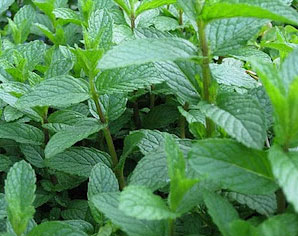 I love herbs. I grow them, I cook with them, I eat them and sometimes just smell them for instant links to memories and tastes. Growing up in Hawkinsville as a child, our farm provided space a plenty for me to dabble in herb cultivation. It was there, on our farm, that I first learned what organic gardening was, though I did not know my “organic gardening” was “organic gardening.” I knew our cows ate our grass, drank our spring water, and breathed our surrounding air. So, I knew, somewhat instinctively, that their manure was just good… basic, natural fertilizer – the byproduct of the cows’ natural digestion. What better fertilizer, compost amendment, and soil conditioner could there be?
I love herbs. I grow them, I cook with them, I eat them and sometimes just smell them for instant links to memories and tastes. Growing up in Hawkinsville as a child, our farm provided space a plenty for me to dabble in herb cultivation. It was there, on our farm, that I first learned what organic gardening was, though I did not know my “organic gardening” was “organic gardening.” I knew our cows ate our grass, drank our spring water, and breathed our surrounding air. So, I knew, somewhat instinctively, that their manure was just good… basic, natural fertilizer – the byproduct of the cows’ natural digestion. What better fertilizer, compost amendment, and soil conditioner could there be?
But what truly struck me was the saying, “you are what you eat.” Since my cows were eating our natural grass, I knew their manure was safe. Same theory went for their meat and milk. Of course, I composted the manure and thoroughly washed the produced, but that simple, basic cycle of good things in, good things out stuck with me and I still believe it today. Those tomatoes, melons, herbs, squash, cucumbers, peppers, and corn were just amazing, and nothing beats a farm fresh produce basket!
As with my Herban Gardening today, I firmly believe in “you are what you eat” moxie. Whether I’m planting herbs grown by a grower I know or starting from seed, I know what is on and in my herbs, thus I know what will be on and in my kitchen, plate, and tummy! So with this in mind, let’s discuss a few of the gardening basics when it comes to growing herbs.
- Light and water…lots of light but not too much water. Herbs prefer a well-drained soil, which means not a soggy, soupy, mushy growing medium. Water thoroughly and often, but be sure your herbs have enough time to soak up the water you give them each time, developing healthy, deep roots. In the heat of the summer, water in the morning and again if your basil begins to look peaked. Wider leafed herbs such as basil, mint, salvias, and sage will show wilting more so than little leaf thyme and rosemary.
- Pinching and pruning…the green new growth is definitely the freshest, so pinch off new shoots for cooking and arranging. The woody stems of rosemary and thyme can be used for BBQ skewers, stew flavorings, and bouquet garni. The flavor, essence, and oils are in the leaves, so use them for your culinary creations. Basil and oregano make lovely bolts of flowers that I love to use in arrangements. Allowing your herbs to bloom does make them focus their energy on flower and seed production, rather than foliage…pinch off flowers for arrangements and allow new shoots of leaves to sprout.
 Companion plantings…thyme, rosemary, and the like, can take hot, dry weather better than the others, thus they make good companions in the garden or container. Mint is very aggressive, so keep it in a pot or let it have its own plot in the garden. It will take over. By grouping herbs that need the same or similar water and light requirements, you will be able to provide your herbs with a more uniform care regimen.
Companion plantings…thyme, rosemary, and the like, can take hot, dry weather better than the others, thus they make good companions in the garden or container. Mint is very aggressive, so keep it in a pot or let it have its own plot in the garden. It will take over. By grouping herbs that need the same or similar water and light requirements, you will be able to provide your herbs with a more uniform care regimen.- Plan for your palette…I grow the herbs I like to eat. I like some better than others, thus more of those. Think also on the different varieties of herbs that abound i.e. Chocolate Mint, Orange Mint, Margarita Mint, Kentucky Colonel Mint – each one a mint, but distinctively different flavors nonetheless. If you cook with a more savory palette, have a heavier garden plot of savory herbs. Plan and plant for your palette, and you’ll be more than thrilled to incorporate your specific herbs into your menu.
I hope you discover your favorite herbs and combos of flavor to bring in from the garden. A lifestyle of garden living is an enriched way of life – complete with the fruits of your labor and tastes of your very own garden.
James T. Farmer III was born and raised in Georgia, where he continues to live and work as a landscape designer. He shares his love of food, flowers and photography on his blog All Things Farmer.

